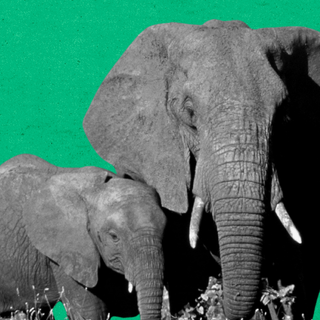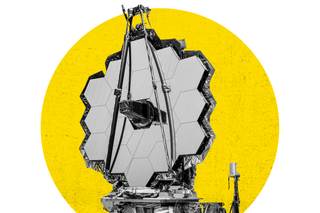
NASA Set to Launch Hubble Telescope’s Successor, Expected to Peer Into Universe’s Origins
The James Webb Space Telescope will help us look much further back in time than ever before.

There came a time in our long history of stargazing when we had seen everything that it was possible to see from Earth. The atmosphere, being as thick as it is, obscures and distorts views from outer space by absorbing or reflecting light. In 1990, therefore, the United States National Aeronautics and Space Administration (NASA) launched a telescope into outer space, 600 km above Earth.
This was the Hubble Space Telescope (HST) — which revolutionized astronomy forever. It allowed glimpses deep into space that would never have been possible earlier; also helping astronomers zero in on a “Hubble constant” — a number depicting the rate of the universe’s expansion. Not only that, it captures stunningly clear visuals of the cosmos that are miraculous to behold, unlocking many of its secrets one image at a time. The “Pillars of Creation” is one such awe-inspiring image from the Eagle Nebula (a cluster of stars 7,000 light-years away from Earth)that, thanks to HST, we have been lucky to see in our lifetimes.
Now, NASA’s beloved Hubble Telescope will crown a successor named the James Webb Space Telescope (JWST), which has claims to be the most sophisticated space telescope.
Astronomers have long awaited the launch of JWST, because it will allow glimpses into our universe’s very origins. The launch of the James Webb Space Telescope was a “journey decades in the making.” It has been described as “the most expensive astronomical gamble” in history — but the challenges and enormous travails behind getting the telescope to this stage are worth it because they help us get even closer to understanding truths about matter, the universe, and humanity’s place in it.
See,there were a few things that even the original Hubble couldn’t see. For one, it is a reflecting telescope armed with cameras and spectrographs that can detect visible and ultraviolet light. Ultraviolet light from distant objects cannot reach Earth due to atmospheric absorption. But there are objects that are too far away for even HST to observe.
Instead, the JWST will be able to observe them in infrared light. “In theory, JWST would be able to detect a heat signature of a bumblebee from Earth if it was as far away as the Moon,” Science Alert noted.
Related on The Swaddle:
Scientists Find Molecules in Space That Could Form New Solar Systems
JWST is much larger than HST — this is significant because, “You can think of a telescope as a giant bucket that’s collecting light. The bigger the bucket, the more light you collect, and the more faint objects you can see in greater resolution,” according to Meredith MacGregor, assistant professor in the Center for Astrophysics and Space Astronomy (CASA) at University of Colarado, Boulder.
In the electromagnetic spectrum, visible light constitutes the light we can see with our naked eye. Ultraviolet light is light with a shorter wavelength, and falls on one side of the spectrum. Infrared light has a much longer wavelength, making it fall on the other end of the visible light spectrum. We feel infrared light as heat, and that’s exactly what the telescope will be picking up too.
“The space between galaxies stretches as the universe expands, and that means that light emitted from the galaxies is getting stretched as it travels through space. We call that the cosmological red shift,” MacGregor explains. By being able to observe infrared light — with the longer wavelength — astronomers can catch glimpses of these early galaxies that could give us more insights into how it all began.
“By observing in the infrared we’re going to see back further in time and see the light coming from the first galaxies that formed,” MacGregor noted. It could, in other words, potentially show us what the universe looked like when it first formed — given that the light from back then would still be traveling towards us.
While Hubble was able to detect “toddler” galaxies, Webb can detect “baby” galaxies. “It will peer back in time, to just a few million years after the Big Bang to witness the end of the dark ages, when matter first coalesced to form the simplest stars of hydrogen and helium,” Science Alert noted.
But that’s not all. James Webb is expected to pick up what astronomers call “biosignatures” — signs of potential life, like methane, on other planets. Since infrared can penetrate stellar dust, it can also be useful in observing the materials that lead to stars and planetary formation.
While Hubble orbited the Earth from around 600km away, Webb will stay fixed relative to Earth from a 1.5 million distance and orbit the Sun instead.
We might be able to see a billion more galaxies with JWST, and even trace a chronology of matter’s origins. But the findings are sure to reinforce one thing which will remain true: discovering the costly limits of our fallibility as a society full of strife may help us realize our own value, and what it took for the universe to make us happen. As Carl Sagan said, “Every one of us is, in the cosmic perspective, precious. If a human disagrees with you, let him live. In a hundred billion galaxies, you will not find another.”
Rohitha Naraharisetty is a Senior Associate Editor at The Swaddle. She writes about the intersection of gender, caste, social movements, and pop culture. She can be found on Instagram at @rohitha_97 or on Twitter at @romimacaronii.
Related


A Food App Has Made Its First Delivery in Space
